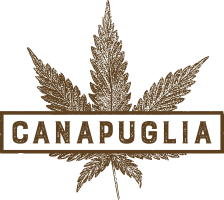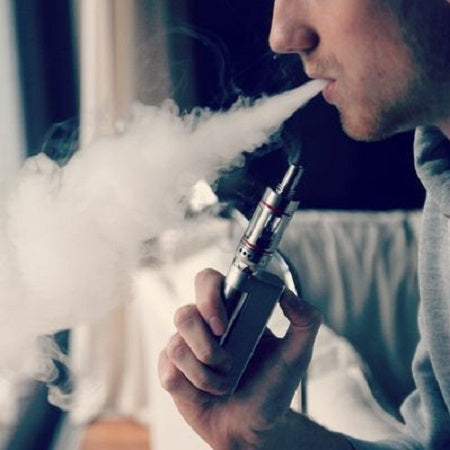Various studies and articles have recently appeared regarding vaping products and the ingredients used to produce them, as well as mentions of some additives that can be deemed harmful when vaporized. In this article we will explain which ingredients are used in Harmony E-Liquids, introduce the additives you need to be aware of when vaping, and talk about the current situation of Vitamin E Acetate.
How Harmony CBD E-Liquids are made
All Harmony E-Liquids have the same ingredients in common: Propylene Glycol (PG), Vegetable Glycerin (VG), Cannabidiol isolate (CBD) and flavors (PG based or terpene based). The vast majority (85% -98%) of an E-Liquid Harmony is generally composed of a mixture of PG and VG in a PG / VG 80/20 ratio. The CBD content ranges from 0.3% to 10%. PG-based flavors are added from 5% to 10% and terpene-based flavors from 1% to 3%, depending on the exact composition and safety calculations (see below for more information). Both PG and VG have in common a long history of pharmaceutical uses and applications and have a safety profile consolidated through many studies . Harmony only buys these two ingredients if they are pharmaceutical grade, adhering to the recommendations on the conditions and shelf life. This means that both compounds are at least 99% pure and contain no detectable residues that could cause harm to health, according to the European Pharmacopoeia. CBD isolate is considered safe and non-additive according to the World Health Organization . Harmony has a rigorous quality control system to ensure the quality and integrity of each batch of isolated CBD used for production. Below is more information on why CBD isolate is used in Harmony products, instead of broader spectrum extracts. The main reason for concerns about the safety of E-Liquids usually comes from the use of flavorings. Conventional flavors are commonly based on Propylene Glycol (PG) and Harmony always buys them from reputable suppliers within the European Union. The European Tobacco Products Directive (TPD) prohibits the use of certain flavoring compounds, which are known to cause harm if inhaled, and Harmony ensures that its suppliers comply with these regulations. In addition, Harmony always carefully checks the safety documentation provided for flavoring substances, in order to ensure that any potentially harmful substances are used only in quantities that are not dangerous to the health of consumers, according to current knowledge on the subject. Our terpene-based flavors are carefully produced internally using certified, isolated and food-grade aromatic substances, present in the European Union list of flavoring substances defined by EU Regulation 872/2012. The raw materials used by Harmony are sourced exclusively from reputable suppliers within the European Union. Each final flavoring formulation is sent to an independent consultancy, which creates a Material Safety Data Sheet (MSDS) of the mixture, which outlines any hazards and precautions to be taken and which contains detailed information on the potentially hazardous ingredients present in the mixture. On the basis of this safety data sheet, it is possible to calculate the concentration below which these potentially dangerous ingredients cannot cause harm to human health, always according to current knowledge on the subject. Finally, for each final formulation of E-Liquid, a new MSDS is created by an independent body, with the same method used for terpene-based flavors. All elements of mandatory and recommended labeling (such as allergen warnings) are included in the design of Harmony product packaging and are periodically reviewed and updated to ensure consumers have a fully informed purchasing choice.
Harmony product testing
Harmony and its suppliers perform tests with independent and reliable laboratories to ensure that the ingredients meet the highest quality standards. Each batch of isolated CBD is tested for its potency by both Harmony and its suppliers independently, using HPLC or UPLC (High Performance Liquid Chromatography or Ultra High Performance Liquid Chromatography), a technique that allows for separation, detection, and the quantification of cannabinoids and other compounds in a blend. CBD isolate is used for the production of E-Liquid only if the CBD content of the material is equal to or greater than 99% and there are no detectable traces of THC present. In addition, raw materials can be tested for residual solvents, pesticides and heavy metals. This test is performed by the suppliers on every single lot and is occasionally re-tested by Harmony through a pre-established quality control plan. Solvent and pesticide tests are typically performed using special HPLC techniques that can detect and quantify these compounds at the PPM (parts per million) level. The presence of pesticides at dangerous levels of residual solvents immediately excludes the raw material from use in production. The amount of heavy metals is usually measured by ICP (Inductively Coupled Plasma) spectroscopy. Likewise, the presence of contaminants above the safe levels defined by European Regulations prohibits the use of a substance in production. Finally, the final formulation of an E-Liquid can be evaluated by means of an emissions test. The vaporization process is recreated by special equipment and the resulting vapor is analyzed to verify the presence and quantity of dangerous compounds such as formaldehyde, acrolein and others. The test results are then evaluated by a qualified professional to determine if the contaminants are present at levels dangerous to human health.
The difference between CBD isolate and "Cannabis Extracts" in vaporization
All Harmony vaping products are created from isolated CBD and never with what is commonly referred to as "cannabis extract" or "full spectrum extract". The reason is simply the difference in purity, and the presence / absence of some components such as fats, fatty acids, hydrolysis products and terpenes. A full spectrum extract is generated by initially extracting dried and ground hemp with a solvent or CO2, which is subsequently removed. This produces a green / brown paste rich in cannabinoids. In some cases, this paste is marketed as a "full spectrum extract". However, most of the time this concentrate is heated to convert CBDA to CBD, followed by a short-path distillation which removes chlorophyll and other impurities, producing a brownish yellow semi-solid: the real "full spectrum extract." ". In order to remove residual traces of THC and create a so-called "broad spectrum extract", another distillation is carried out under reduced pressure. Both full-spectrum and broad-spectrum extracts typically contain between 75 and 85% CBD, but also relatively high amounts of residual terpenes, as well as vegetable oils, fatty acids and hydrolysis products (generated in the previous stages heating). The levels and exact composition of these impurities generally vary from batch to batch. While these components are sought after during the manufacture of, for example, dietary supplements, because they support the creation of an "entourage effect", they can be dangerous in vaping applications for various reasons. For example, vegetable oils and waxes are suspected of causing lipid pneumonia and impaired lung function when inhaled, while fatty acids and hydrolysis products can cause irritation and worsen respiratory disease symptoms. Terpenes in uncontrolled quantities can cause or trigger allergies, especially when the consumer is not informed of their presence on the product label, where they can be "hidden" under the term "broad / full spectrum extract". It is up to the manufacturer of vape products containing such extracts to carry out the right quality controls and to inform its consumers in the best way. Although Harmony supports the idea that vaping such products is safer than burning smoke, our company has decided not to launch such products for the time being, focusing on products containing exclusively isolated CBD. CBD isolate can be produced from the broad spectrum extract by further purification. A "winterization" phase is often included, in which the extract is dissolved in alcohol and stored in extreme cold, causing the waxes to precipitate so that they can be filtered. After removing the alcohol, the residue is dissolved in a non-polar solvent. Pure, isolated CBD crystallizes over time and can be collected and dried in a vacuum oven. This isolate has a purity greater than 99% and is practically free of waxes and oils. The only common "impurity" is a small amount of CBDV (Cannabidivarin, a phytocannabinoid), which is created by co-crystallization with CBD. A different method of producing isolated CBD can be its total synthesis, made from suitable starting materials, followed by a purification done in the laboratory. Likewise, the final product would be free of waxes, oils, terpenes and in this case also CBDV.
The current situation of vitamin E
Vitamin E Acetate (or Tocopherol Acetate) is a compound derived from Vitamin E, widely available in the market and used as a dietary supplement or as a skin care ingredient. Both vitamin E and its acetate have antioxidant properties, however acetate has a slightly lower acidity and a longer shelf life. It is a viscous, colorless, oily substance with a high boiling point (363 ºC). At this point, it must be understood why this compound ended up in vape cartridges, as it is not a known contaminant for cannabis extracts, it is commonly used as a solvent or as a flavor. That said, some companies appear to have sold it as a thickening / diluting agent for extracts, although there is no data on its inhalation toxicity and although the compound's high boiling point and molecular weight should discourage its use in devices from vape. The misperception that it might be a "healthy and natural" option, combined with its low cost and suitable viscosity profile, may have played a role in its use, but the exact reasons have yet to be determined. Under the European regulations established by the Tobacco Products Directive (TPD), adding additives to E-Liquids is strictly prohibited, so it is highly unlikely that such products will enter the legal market. There are a number of unregulated vaping products that are currently under investigation in the United States. The FDA announced that it had analyzed 18 cannabis products, 10 of which contained vitamin E acetate , which was directly linked to the outbreak of lung disease in the United States. At Harmony, we don't use Vitamin E Acetate in any of our CBD-based liquids. We use a blend of CBD, PG, VG and flavorings, none of which contain this vitamin. We also publish our certificates of analysis online on a monthly basis to ensure that the CBD concentration is correct. To clarify any doubts about the safety of vaping, the government agency Public Health England in the UK has published a study showing that vaping is 95% safer than smoking . That said, the use of E-Liquid should not be recommended to anyone who has never smoked or vaped before. We hope this article has been helpful, if you would like to know more about the content of our E-Liquids or if you have any other questions, please do not hesitate to get in touch.
SOURCE: MEET HARMONY



